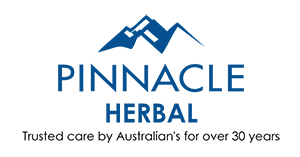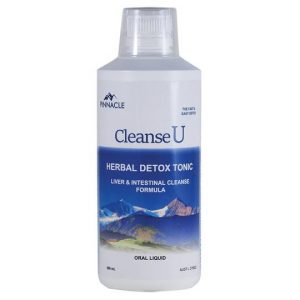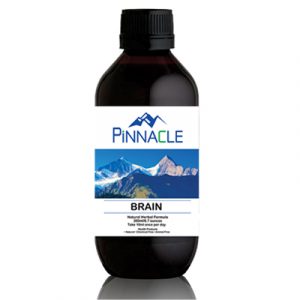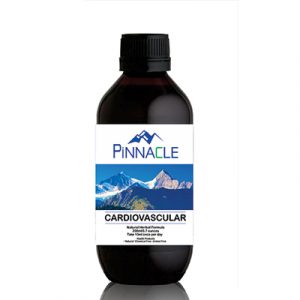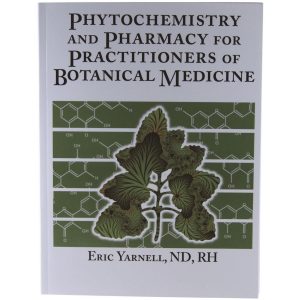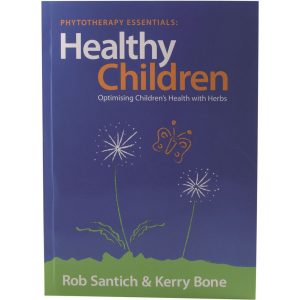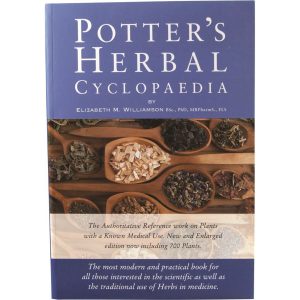My Dog Eats Better Than Your Kids by Dr Peter Dingle
The foods we feed our children and what we eat now will determine disease patterns in the future. Most of the chronic illnesses of today were either rare or unheard of just 100 years ago and still don’t exist in many countries where people live on traditional diets. The scientific literature is now abundant with evidence showing how changes in lifestyle and diet not only reduce the chances of these chronic diseases but also, in many cases, reverse these conditions without the use of prescription drugs.
This colourfully illustrated book can be read by anyone from 10 to 100 years of age and tells the story of what we should be eating, where we have gone wrong and how we can all obtain optimal health.
Natural Fertility by Francesca Naish
Nearly all women have problems with their fertility at some time in their lives. Either they have too much of it when they don’t want it, or too little when they do! In between their ‘hormones’ can plague them with a host of physical and emotional problems.
Women can learn to overcome all these ‘women’s problems’ using completely natural methods. This book offers solutions and preventative advice that will contribute enormously to women’s well-being, as well as helping to overcome problems with contraception, infertility (in men, as well), and reproductive and hormonal health.
Natural Fertility allows you to make clear and informed choices about the ‘orthodox’ and natural alternatives open to you. It tells you how to understand and cooperate with your fertility cycles, rather than attempting to override or manipulate them, through observing natural body ‘signs’, and combining this with your own ‘lunar’ biorhythmic cycle. You can also combine ‘natural fertility awareness’ with other contraceptive techniques or plan your ideal healthy baby.
This book provides women with the means to manage their fertility, from puberty through to menopause, and adapt to the different needs of the various times of their life, without recourse to devices or drugs.
No More Heart Disease by Dr Louis Ignarro
Dr. Louis Ignarro discovered "the atom" of cardiovascular health--a tiny molecule called Nitric Oxide. NO, as it is known by chemists, is a signaling molecule produced by the body, and is a vasodilator that helps control blood flow to every part of the body. Dr. Ignarro's findings led to the development of Viagra. Nitric Oxide has a beneficial effect on the cardiovascular system as well.
NO relaxes and enlarges the blood vessels, prevents blood clots that trigger strokes and heart attacks, and regulates blood pressure and the accumulation of plaque in the blood vessels. Dr. Ignarro's current research indicates that Nitric Oxide may help lower cholesterol by facilitating the actions of statin drugs like Lipitor.
The goal of the regimen presented in NO More Heart Disease is to age proof the cardiovascular system, keeping the vascular network clean and elastic through enhanced NO productivity. The plan is easy-to-follow without extreme lifestyle adjustments, involving taking supplements to stimulate Nitric Oxide production, incorporating NO friendly food into the diet, and a moderate exercise program.
ONE BITE AT A TIME BY SARAH LANTZ & TABITHA MCINTOSH
In the book, One Bite at a Time: Reduce Toxic Exposure and Eat the World you Want, authors Tabitha McIntosh and Dr. Sarah Lantz offer a better understanding of consumer and industrial chemicals and their impact on the human body – and importantly, the concrete steps needed to both reduce toxic exposure and build body resiliency.
It’s in the later – build body resiliency – where the focus of the book really takes shape. Food is our focus here. Why? Firstly, conscious food choices can significantly reduce (or eliminate) toxic exposure; secondly, particular food components can build body resiliency against toxic exposure; and thirdly, food choices can provide a high ground of ethics with systemic solutions to the issue of human and environmental toxicity and pollution.
Across Australia there are some significant movements and ethical businesses sprouting up and pushing back in response to the industrial food industry. And in this book you are going to hear from those heroes of our food world – producers, farmers, pickers packers, bakers, makers, researchers, food writers and bloggers – people taking matter into their own hands and creating happier, heartier, healthier solutions for other Australians. Ultimately, food(more...)
Paleo Desserts by Jane Barthelemy
Now you can have your cake and be paleo, too! The Paleolithic diet and lifestyle- based on eating hunter/gatherer foods for optimal health- has surged in popularity, but with grains, dairy, and refined sugars off the menu, indulging isn't easy. Paleo Desserts is the first comprehensive cookbook of its kind: everyone's favourite desserts now made Paleo friendly, lower carb, and gluten free. Providing 125 mouthwatering, easy-to-follow recipes from brownies to milkshakes, Jane Barthelemy serves up treats to satiate even the biggest caveman sweet tooth.Recipes include Raspberry Crumble Bars, Tiramisu, Black Forest Cherry Pie, Lemon-Berry Parfait, Pumpkin Cheesecake, Whipped Coconut Crème, and more. Paleo Desserts includes a colour-photo insert and ingredient lists for simplified shopping.
Phytochemistry & Pharmacy for Practitioners of Botanical Medicine by Eric Yarnell
Responding to the dearth of high quality, professional level materials designed specifically for the natural medicine practitioner, respected botanical expert Eric Yarnell, ND, RH (AHG) has written an authoritative textbook that blends two interrelated realms of botanical medicine – phytochemistry and pharmacy – in a clinically-applicable manner. In addition to making foundational basic science data relevant to real world situations, Phytochemistry and Pharmacology for Practitioners of Botanical Medicine is designed as a reference regarding the preparation of effective botanical extracts, as well as evaluating the quality of extracts already prepared. Each major group of secondary plant metabolites is reviewed in the text, which also contains a lengthy section on the preparation of botanical extracts.
PHYTOTHERAPY ESSENTIALS: HEALTHY CHILDREN BY ROB SANTICH & KERRY BONE
The benefits, risks and requirements for herbal therapy in children differ from those in adults. This book outlines the key principles that govern herbal practice for this special group. Sound, practical information based on clinical experience as well as evidence-based research provides a balanced and authoritative approach.
PLANT INTELLIGENCE AND THE IMAGINAL REALM – INTO THE DREAMING OF EARTH BY STEPHEN HARROD BUHNER
- A manual for opening the doors of perception and directly engaging the intelligence of the Natural World.
- Provides exercises to directly perceive and interact with the complex, living, self-organizing being that is Gaia.
- Reveals that every life form on Earth is highly intelligent and communicative.
- Examines the ecological function of invasive plants, bacterial resistance to antibiotics, psychotropic plants and fungi, and the human species.
Potter’s Herbal Cyclopaedia Book by Elizabeth Williamson
In 1812, when Napoleon was on the retreat from Moscow, a young man called Henry Potter was hanging a sign above his premises in Farringdon Street, London. The sign read- "Seedsman, Herbalist and Dealer in Leeches". He could never have imagined that he had just begun what was to become Europe's largest and most famous Herbal Medicine manufacturer. Potter's New Cyclopaedia has been accepted world-wide as the authority on plant drugs ever since it was first published in 1907; used as a source of reference by medical scientists, clinicians and laymen alike.To produce a new edition of this monumental work was a daunting task, not only because of the eminent status of the previous editions but particularly in the present climate of renewed interest in herbal drugs. Nevertheless, Dr Williamson has retained the practical and philosophical traditions of the book whilst, at the same time, documenting recent scientific and medical research.This book is unique in the English language and this new and enlarged edition will ensure that it will continue to be an invaluable point of reference for all those with a belief in the power of plants.
PRESCRIPTION ALTERNATIVES BY DR EARL MINDELL & VIRGINIA HOPKINS
The authoritative guide to prescription drugs and their natural alternatives from trusted nutrition and health expert Dr. Earl Mindell, now completely updated with the latest prescription drugs and their natural alternatives
Principles & Practice of Phytotherapy by Kerry Bone & Simon Mills
This long-awaited second edition of Principles and Practice of Phytotherapy covers all major aspects of herbal medicine from fundamental concepts, traditional use and scientific research through to safety, effective dosage and clinical applications. Written by herbal practitioners with active experience in clinical practice, education, manufacturing and research, the textbook is both practical and evidence based. The focus, always, is on the importance of tailoring the treatment to the individual case.
New insights are given into the herbal management of approxiately 100 modern ailments, including some of the most challenging medical conditions, such as asthma, inflammatory bowel disease and other complex autoimmune and inflammatory conditions, and there is vibrant discussion around the contribution of phytotherapy in general to modern health issues, including healthy ageing.
Fully referenced throughout, with more than 10, 000 citations, the book is a core resource for students and practitioners of phytotherapy and naturopathy and will be of value to all healthcare professionals - pharmacists, doctors, nurses - with an interest in herbal therapeutics.
- 50 evidence-based monographs, including 7 new herbs
- Rational guidance to phytotherapeutic strategies in the consulting room
- New appendices provide useful information on topics such as herbal actions, dosage in children and reading and interpreting herbal clinical trials
- Comprehensive revision of vital safety data, including an extensive herb-drug interaction chart.
Propolis First Aid Handbook: 50 Ways To Use Propolis by George Kowalski
What is Propolis? There are certain trees which exude a resin to protect themselves from infection. This resin, which has strong antibiotic properties, is gathered by bees who then remetabolise it and smear the substance over the walls of the hive. This substance is called Propolis. It is a very complex substance and contains flavonoids, organic acids, vitamins & numerous minerals.
Propolis is a proven antibiotic with antiviral, anaesthetic & antioxidant properties. It is very helpful in a wide range of health conditions & this Handbook outlines 50 of the most common uses for this important substance.
